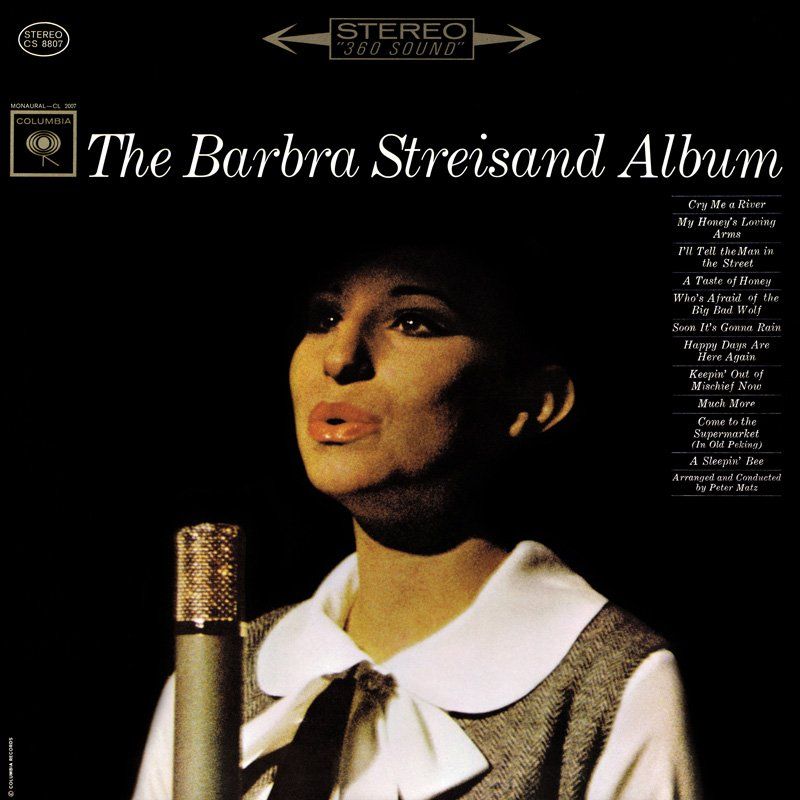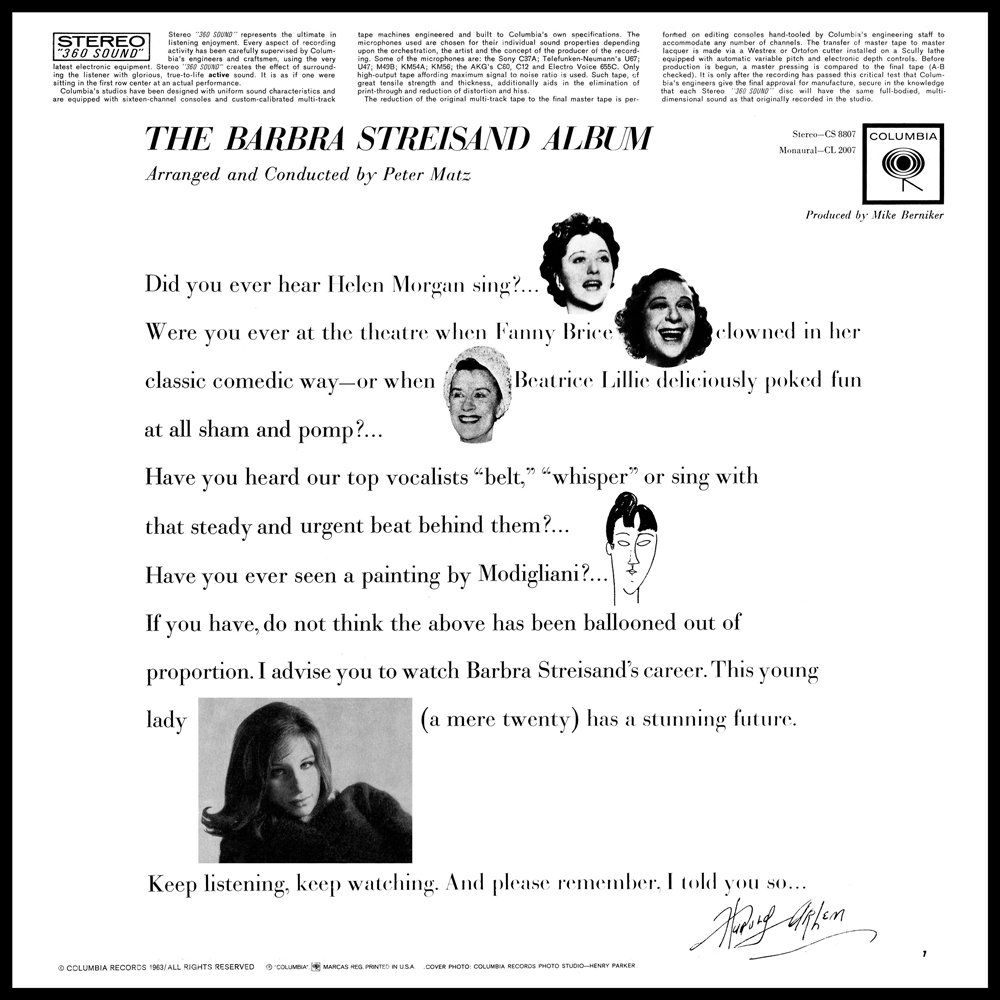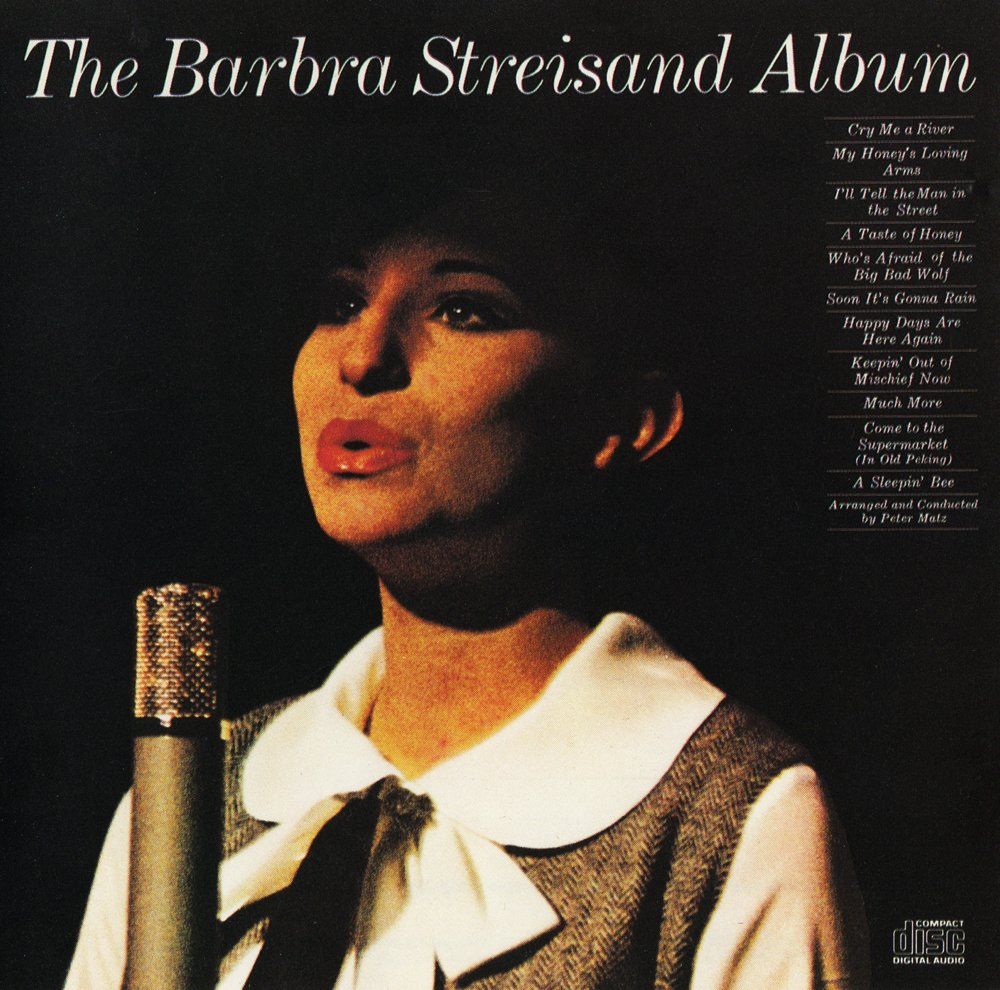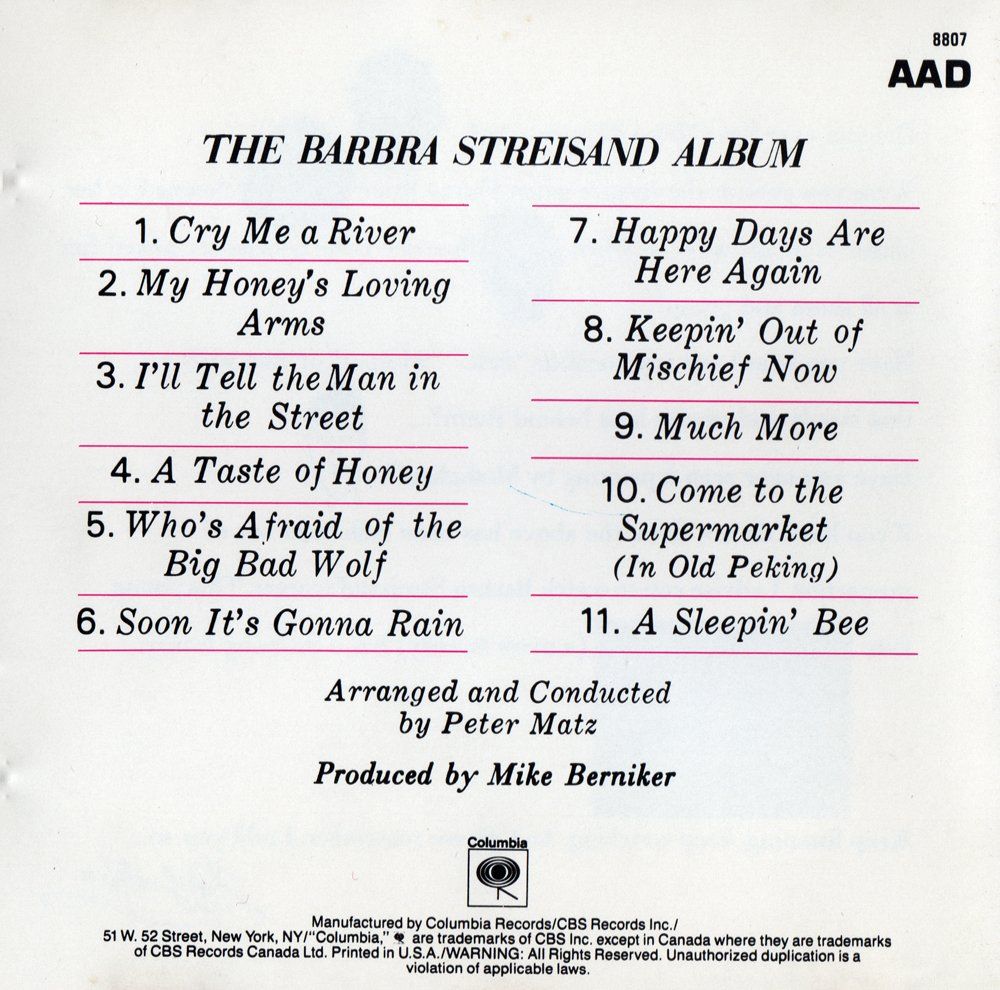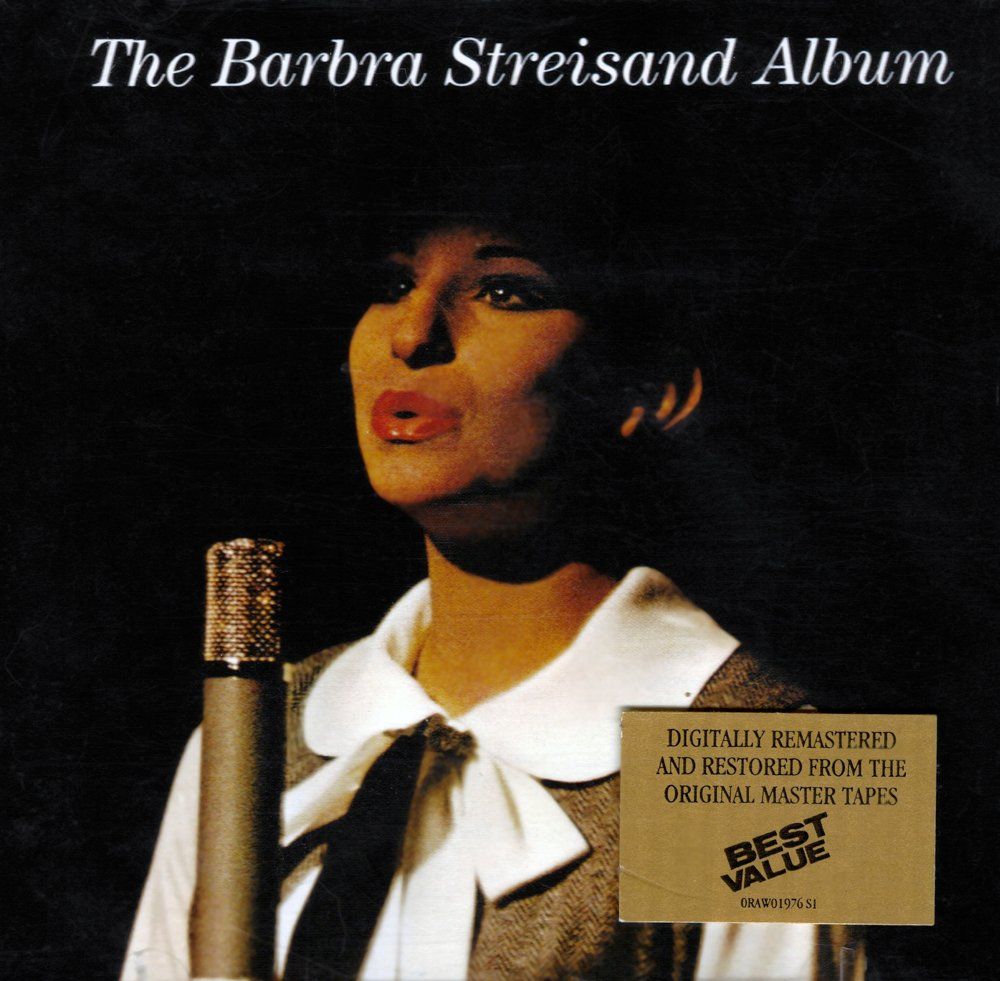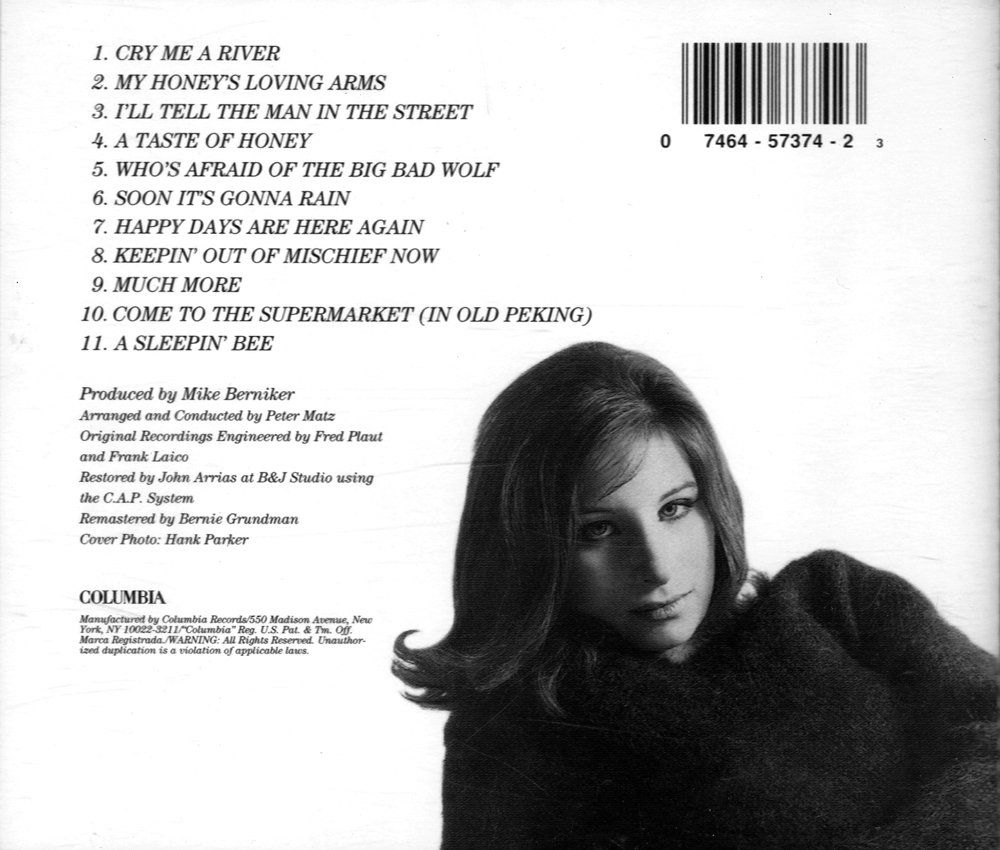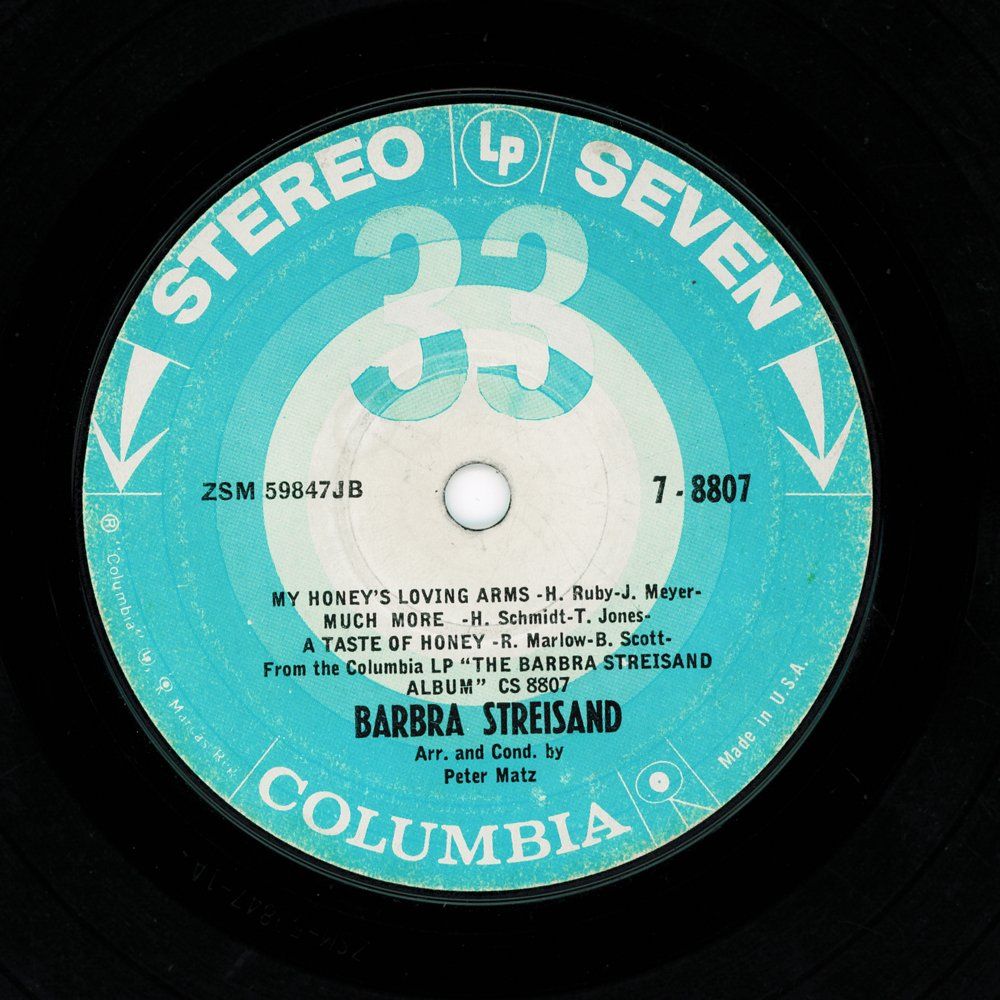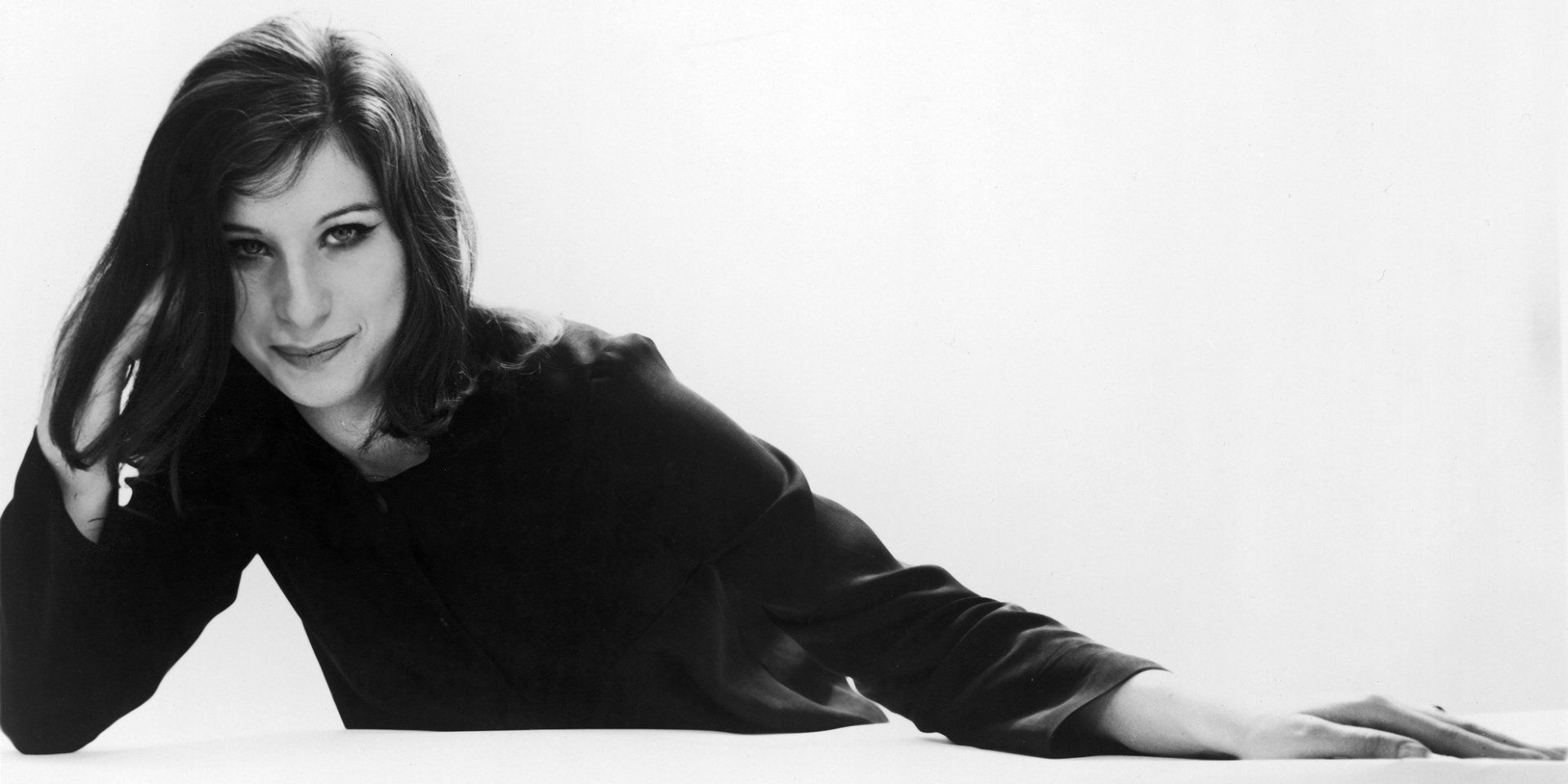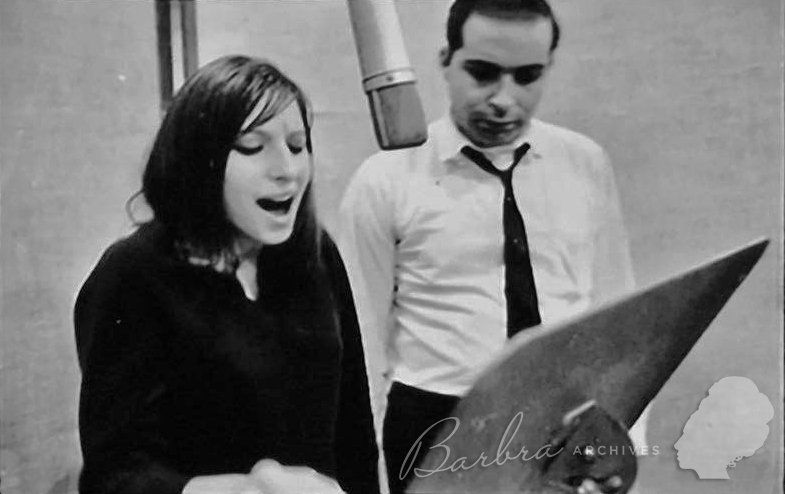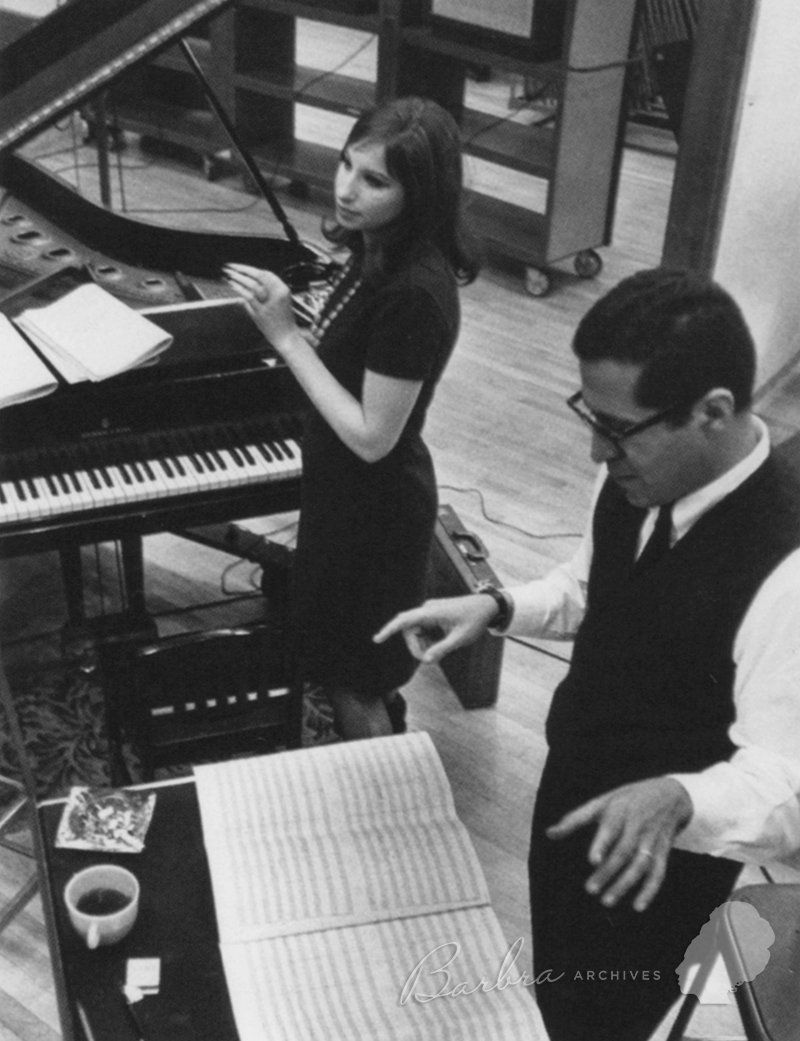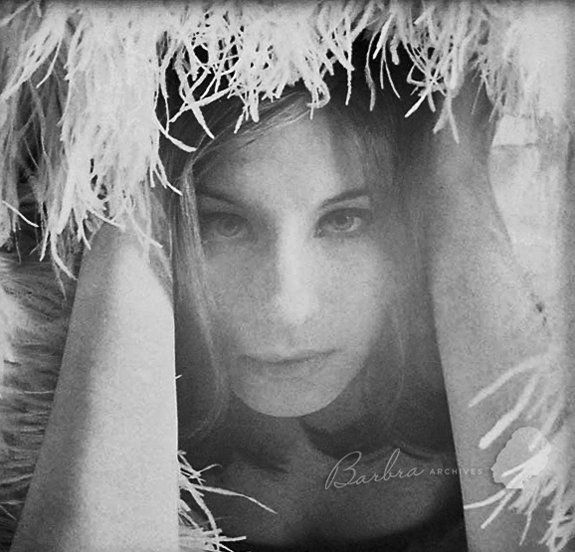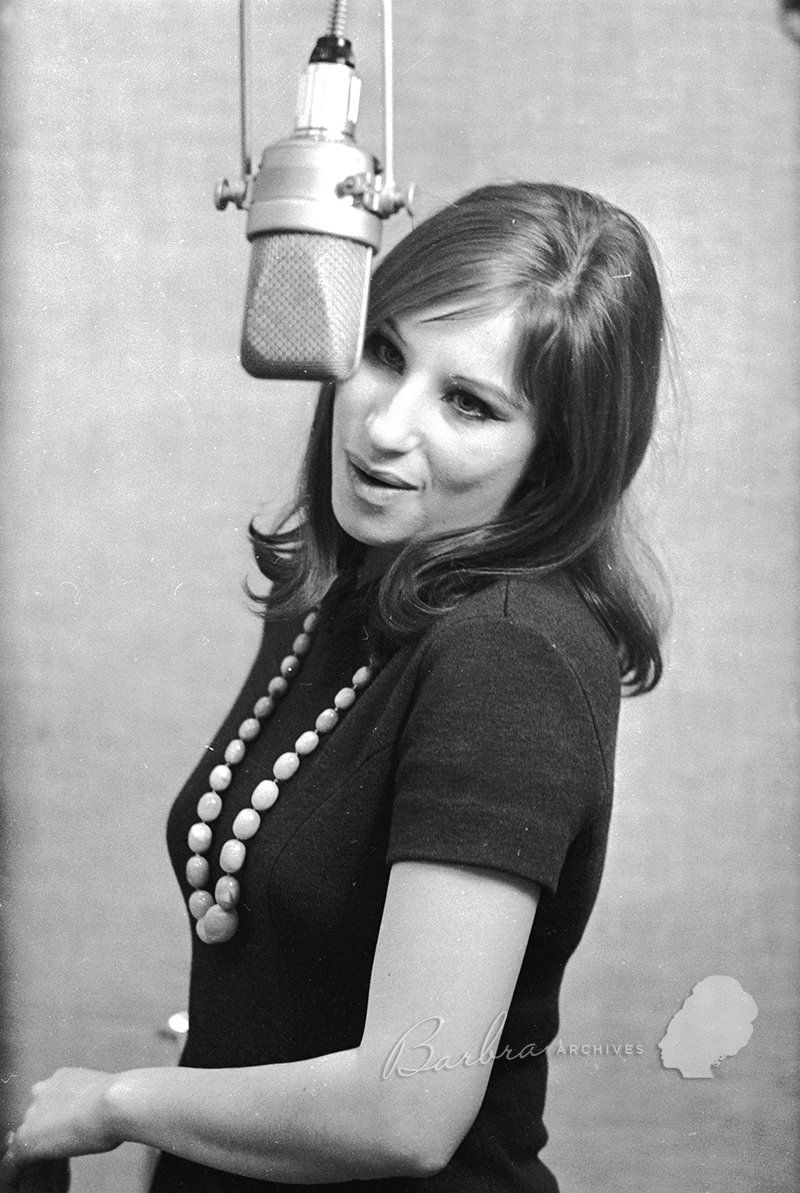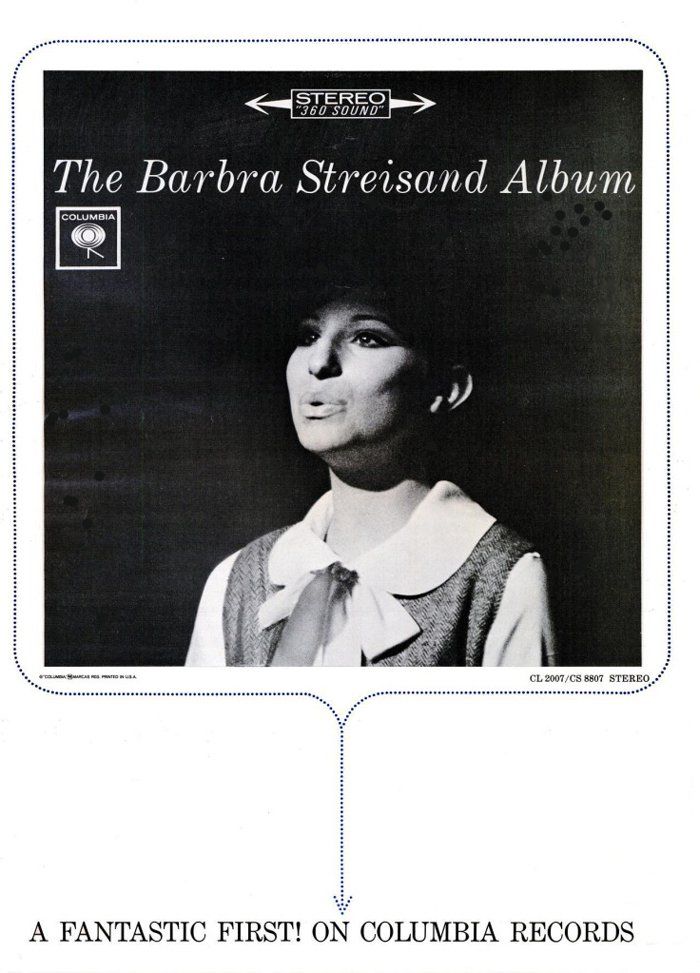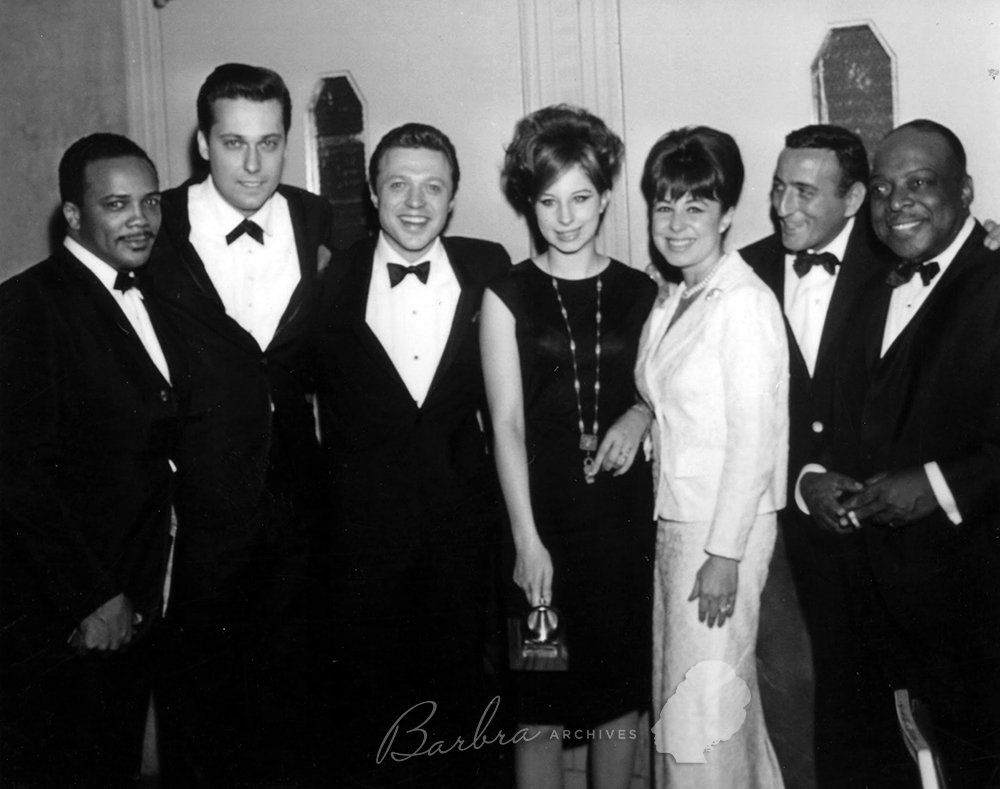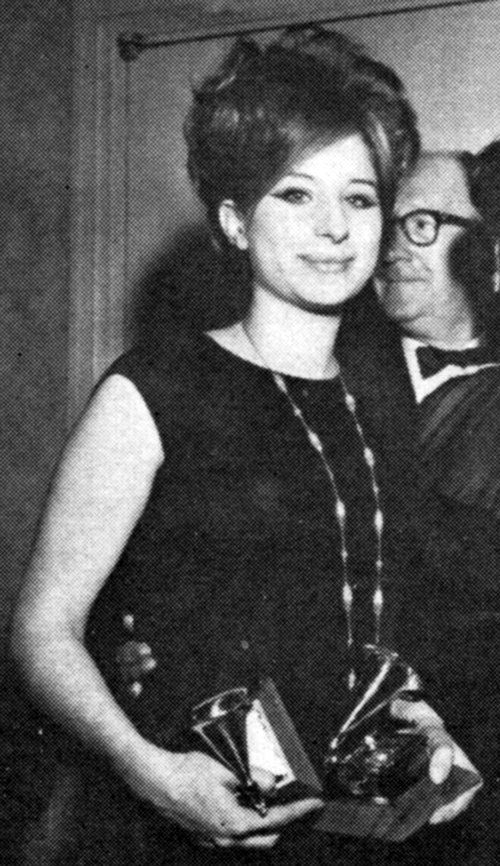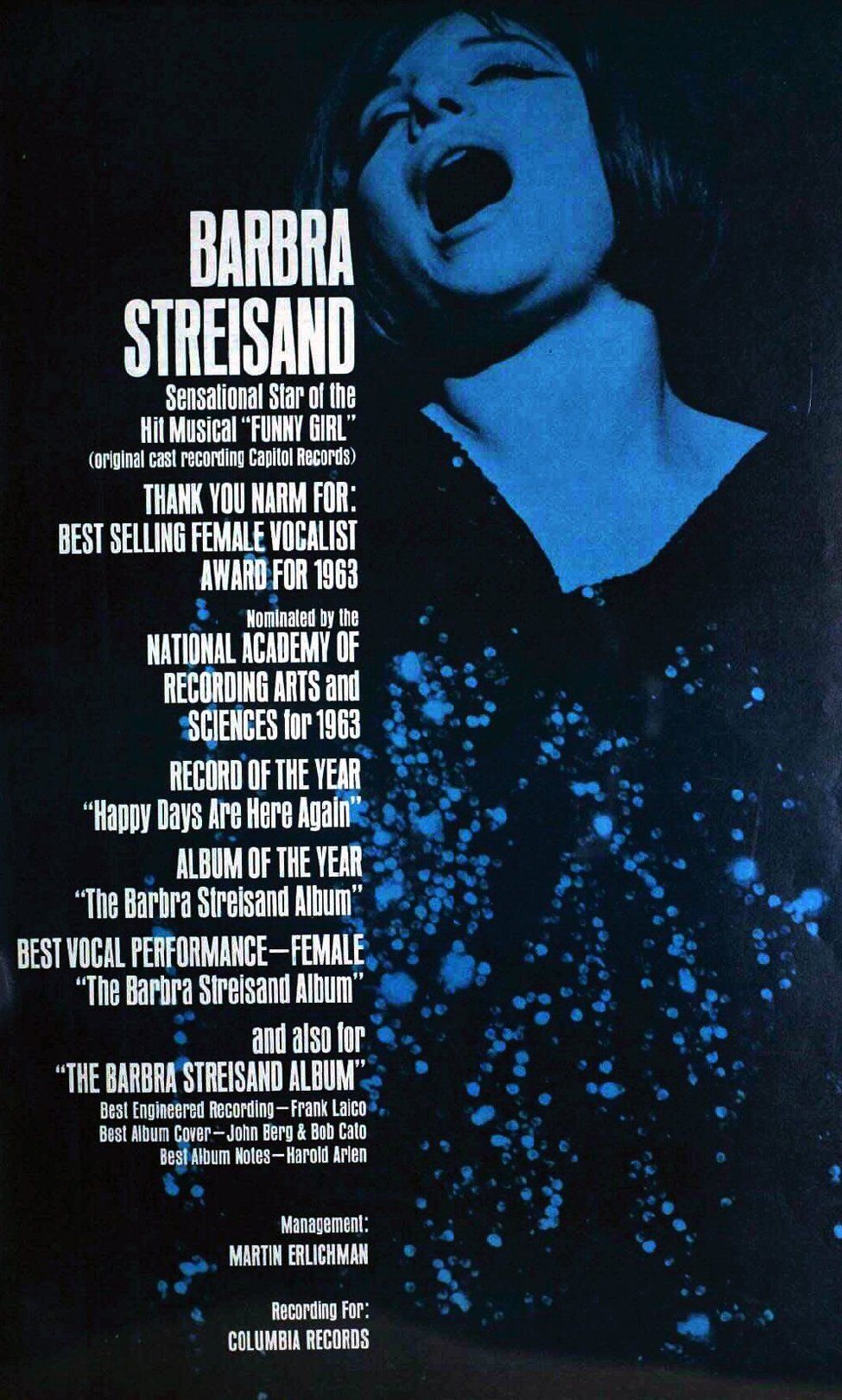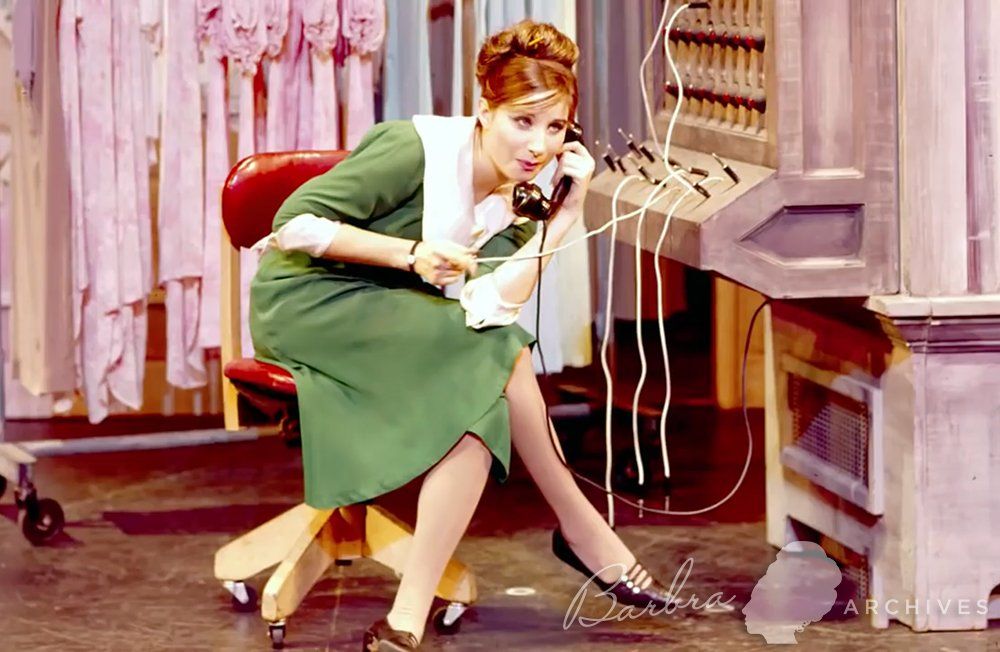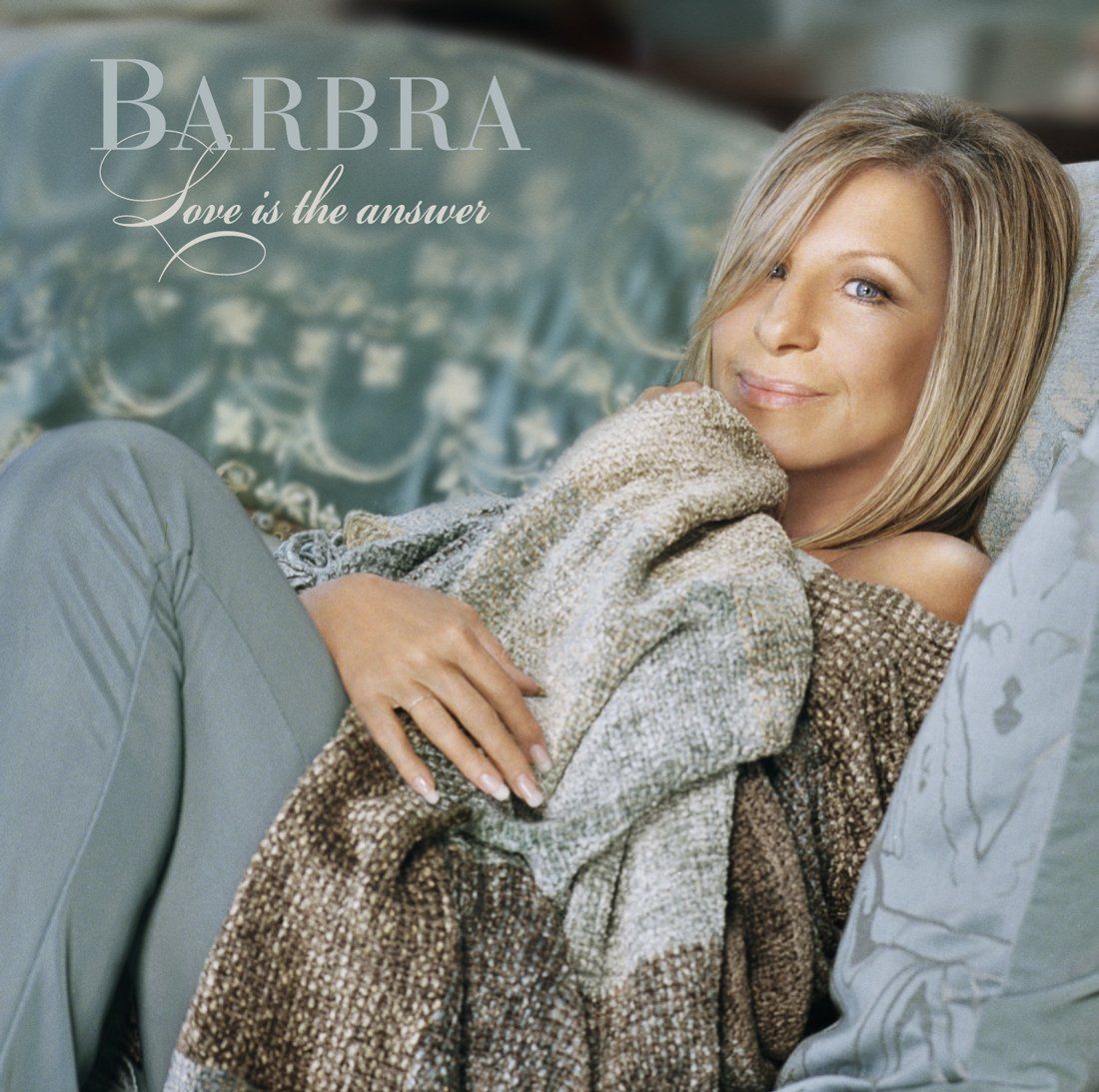Barbra signed a recording contract with Columbia Records on October 1, 1962. Fifteen days later, Columbia booked a studio and orchestra and Barbra recorded her first singles (see Happy Days Are Here Again and My Coloring Book). The 7-inch singles were released but were not well-publicized and failed to make an impact. Marty Erlichman wanted (and had negotiated) for Barbra to record and release two LPs within the first year of her contract with the record company.
So, in early November 1962, Columbia sent a remote recording crew to New York’s Bon Soir nightclub to capture three nights of Streisand’s live act. They planned to release these recordings as Streisand’s first album for Columbia – Live at the Bon Soir! Variety reported about the live recording session and added, “Miss Streisand’s stint is well worth preserving and the LP should serve as an excellent launching pad for her new career as a Columbia discer.”
But Columbia’s president, Goddard Lieberson, didn’t think the Bon Soir tapes quite captured the new singer. So, he asked producer Mike Berniker to record Streisand in the studio where they could perfect her sound.
“When I was looking for someone to arrange and conduct the album,” Barbra wrote in 1991, “I called Harold Arlen who recommended Peter Matz. This was the beginning of a long and creative relationship.”
Arlen worked with Matz on the 1954 musical House of Flowers.
“We rehearsed at my apartment on West End Avenue,” Matz told a Streisand biographer. “Barbra used to come over every day with her lunch in a brown paper bag. It was a delight to work with her. She didn’t know how to read music, but she could follow it up and down on paper. With her instincts she didn’t have to read. People credit me for those early arrangements, but really, most of the ideas and the songs came from Barbra and Peter [Daniels].”

